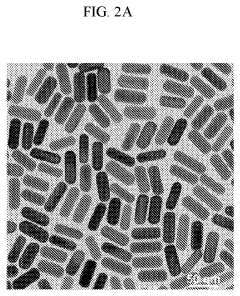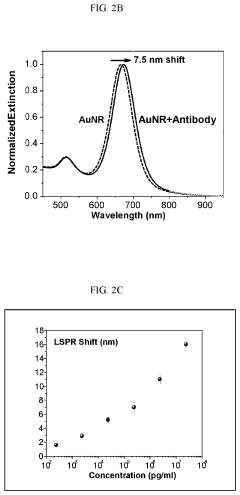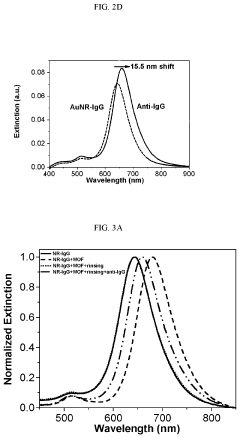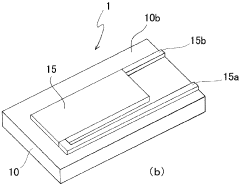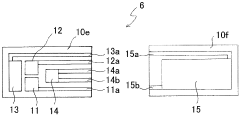Role of Thermal Stability in Developing Plasmonic Biosensor Certainty
SEP 29, 202510 MIN READ
Generate Your Research Report Instantly with AI Agent
Patsnap Eureka helps you evaluate technical feasibility & market potential.
Plasmonic Biosensor Thermal Stability Background and Objectives
Plasmonic biosensors have emerged as powerful analytical tools in recent decades, offering unprecedented sensitivity for detecting biomolecular interactions. The evolution of these sensors has been marked by significant advancements in nanofabrication techniques, optical instrumentation, and surface chemistry. Initially developed as simple surface plasmon resonance (SPR) platforms in the 1980s, these biosensors have progressively incorporated more sophisticated plasmonic nanostructures, enabling enhanced sensitivity and multiplexing capabilities.
Thermal stability represents a critical yet often overlooked aspect in plasmonic biosensor development. As these sensors transition from laboratory demonstrations to real-world applications, their performance under varying thermal conditions becomes increasingly important. Historical data indicates that temperature fluctuations can significantly impact measurement reliability, with even minor thermal variations causing substantial signal drift and false readings.
The primary objective of our technical investigation is to comprehensively understand the fundamental mechanisms by which thermal variations affect plasmonic biosensor performance and to develop robust strategies for enhancing thermal stability. This includes examining how temperature influences the optical properties of plasmonic materials, the stability of biomolecular recognition elements, and the overall sensor response characteristics.
Recent technological trends point toward integrated temperature compensation systems, thermally stable plasmonic materials, and advanced signal processing algorithms as potential solutions. The field is witnessing a paradigm shift from merely acknowledging thermal effects as experimental limitations to actively incorporating thermal management as a design parameter in next-generation biosensors.
Global research efforts are increasingly focused on developing thermally resilient plasmonic platforms that maintain measurement certainty across diverse environmental conditions. This trend aligns with the growing demand for point-of-care diagnostic tools that must function reliably in settings with minimal environmental control.
Our technical goals include quantifying the relationship between thermal fluctuations and measurement uncertainty, identifying optimal materials and structural designs that minimize thermal sensitivity, and developing practical compensation strategies that can be implemented in commercial biosensor platforms.
Additionally, we aim to establish standardized protocols for evaluating thermal stability in plasmonic biosensors, facilitating meaningful comparisons between different sensor architectures and enabling more accurate performance predictions in varied deployment scenarios. This standardization will accelerate the translation of laboratory prototypes into commercially viable products with well-defined operational parameters.
The ultimate objective is to enable a new generation of plasmonic biosensors with guaranteed measurement certainty across a wide temperature range, thereby expanding their applicability in critical fields such as medical diagnostics, environmental monitoring, and food safety testing where operational conditions cannot always be tightly controlled.
Thermal stability represents a critical yet often overlooked aspect in plasmonic biosensor development. As these sensors transition from laboratory demonstrations to real-world applications, their performance under varying thermal conditions becomes increasingly important. Historical data indicates that temperature fluctuations can significantly impact measurement reliability, with even minor thermal variations causing substantial signal drift and false readings.
The primary objective of our technical investigation is to comprehensively understand the fundamental mechanisms by which thermal variations affect plasmonic biosensor performance and to develop robust strategies for enhancing thermal stability. This includes examining how temperature influences the optical properties of plasmonic materials, the stability of biomolecular recognition elements, and the overall sensor response characteristics.
Recent technological trends point toward integrated temperature compensation systems, thermally stable plasmonic materials, and advanced signal processing algorithms as potential solutions. The field is witnessing a paradigm shift from merely acknowledging thermal effects as experimental limitations to actively incorporating thermal management as a design parameter in next-generation biosensors.
Global research efforts are increasingly focused on developing thermally resilient plasmonic platforms that maintain measurement certainty across diverse environmental conditions. This trend aligns with the growing demand for point-of-care diagnostic tools that must function reliably in settings with minimal environmental control.
Our technical goals include quantifying the relationship between thermal fluctuations and measurement uncertainty, identifying optimal materials and structural designs that minimize thermal sensitivity, and developing practical compensation strategies that can be implemented in commercial biosensor platforms.
Additionally, we aim to establish standardized protocols for evaluating thermal stability in plasmonic biosensors, facilitating meaningful comparisons between different sensor architectures and enabling more accurate performance predictions in varied deployment scenarios. This standardization will accelerate the translation of laboratory prototypes into commercially viable products with well-defined operational parameters.
The ultimate objective is to enable a new generation of plasmonic biosensors with guaranteed measurement certainty across a wide temperature range, thereby expanding their applicability in critical fields such as medical diagnostics, environmental monitoring, and food safety testing where operational conditions cannot always be tightly controlled.
Market Analysis for Thermally Stable Biosensors
The global market for thermally stable plasmonic biosensors is experiencing robust growth, driven by increasing demand for reliable diagnostic tools in healthcare, environmental monitoring, and food safety applications. Current market valuations indicate that the biosensor market reached approximately 25 billion USD in 2022, with plasmonic biosensors representing a rapidly growing segment projected to expand at a compound annual growth rate of 9.7% through 2028.
Thermal stability has emerged as a critical differentiating factor in the biosensor market landscape. End-users across pharmaceutical research, clinical diagnostics, and point-of-care testing are increasingly prioritizing sensors that maintain performance integrity across varying temperature conditions. This demand is particularly pronounced in regions with extreme climates and in applications requiring field deployment where controlled environments cannot be guaranteed.
Healthcare applications currently dominate the market share for thermally stable biosensors, accounting for approximately 45% of total demand. This is primarily driven by the need for reliable diagnostic tools in resource-limited settings and the growing emphasis on decentralized healthcare delivery systems. The pharmaceutical research segment follows closely, representing about 30% of the market, where consistent sensor performance is essential for drug discovery and development processes.
Geographically, North America leads the market with approximately 38% share, followed by Europe at 29% and Asia-Pacific at 24%. However, the highest growth rates are being observed in emerging economies across Asia-Pacific and Latin America, where expanding healthcare infrastructure and increasing research activities are creating new market opportunities.
A significant market trend is the convergence of thermal stability with miniaturization and connectivity features. Customers are increasingly seeking integrated solutions that offer not only temperature resilience but also compact form factors and wireless data transmission capabilities. This trend is reshaping product development strategies across the industry.
Price sensitivity varies considerably across different market segments. While high-end research institutions prioritize performance over cost, the growing demand from smaller clinics and field applications is driving the need for more cost-effective solutions. The average price point for advanced thermally stable plasmonic biosensors currently ranges between 5,000 to 15,000 USD per unit, with significant variations based on specifications and capabilities.
Market forecasts suggest that the demand for thermally stable biosensors will continue to accelerate, particularly as applications expand into new domains such as environmental monitoring, agriculture, and food safety. These emerging applications collectively represent the fastest-growing segment, with projected annual growth rates exceeding 12% over the next five years.
Thermal stability has emerged as a critical differentiating factor in the biosensor market landscape. End-users across pharmaceutical research, clinical diagnostics, and point-of-care testing are increasingly prioritizing sensors that maintain performance integrity across varying temperature conditions. This demand is particularly pronounced in regions with extreme climates and in applications requiring field deployment where controlled environments cannot be guaranteed.
Healthcare applications currently dominate the market share for thermally stable biosensors, accounting for approximately 45% of total demand. This is primarily driven by the need for reliable diagnostic tools in resource-limited settings and the growing emphasis on decentralized healthcare delivery systems. The pharmaceutical research segment follows closely, representing about 30% of the market, where consistent sensor performance is essential for drug discovery and development processes.
Geographically, North America leads the market with approximately 38% share, followed by Europe at 29% and Asia-Pacific at 24%. However, the highest growth rates are being observed in emerging economies across Asia-Pacific and Latin America, where expanding healthcare infrastructure and increasing research activities are creating new market opportunities.
A significant market trend is the convergence of thermal stability with miniaturization and connectivity features. Customers are increasingly seeking integrated solutions that offer not only temperature resilience but also compact form factors and wireless data transmission capabilities. This trend is reshaping product development strategies across the industry.
Price sensitivity varies considerably across different market segments. While high-end research institutions prioritize performance over cost, the growing demand from smaller clinics and field applications is driving the need for more cost-effective solutions. The average price point for advanced thermally stable plasmonic biosensors currently ranges between 5,000 to 15,000 USD per unit, with significant variations based on specifications and capabilities.
Market forecasts suggest that the demand for thermally stable biosensors will continue to accelerate, particularly as applications expand into new domains such as environmental monitoring, agriculture, and food safety. These emerging applications collectively represent the fastest-growing segment, with projected annual growth rates exceeding 12% over the next five years.
Current Challenges in Plasmonic Biosensor Thermal Stability
Plasmonic biosensors have emerged as powerful tools for detecting biomolecular interactions with high sensitivity and in real-time. However, thermal stability remains a critical challenge that significantly impacts their reliability and performance. The sensitivity of these biosensors to temperature fluctuations stems from the temperature-dependent optical properties of plasmonic materials and the surrounding medium, which can lead to signal drift and false readings.
One of the primary challenges is the thermal expansion of plasmonic nanostructures. When exposed to temperature variations, gold and silver nanoparticles—commonly used in plasmonic biosensors—undergo dimensional changes that alter their resonance conditions. This thermal expansion shifts the localized surface plasmon resonance (LSPR) peak position, introducing measurement uncertainties that can be misinterpreted as analyte binding events.
The refractive index of the surrounding medium also exhibits temperature dependence, further complicating biosensor performance. Even minor temperature fluctuations can cause significant changes in the refractive index, affecting the propagation of surface plasmon waves and consequently the sensor response. This thermal sensitivity becomes particularly problematic in point-of-care applications where environmental control is limited.
Biomolecular recognition elements used in these biosensors, such as antibodies and aptamers, demonstrate temperature-dependent binding kinetics and conformational stability. Elevated temperatures can denature these recognition molecules, reducing their affinity for target analytes and compromising sensor specificity. Conversely, low temperatures may slow reaction kinetics, extending detection times beyond practical limits.
The interface between plasmonic materials and biological components presents additional thermal stability challenges. Temperature fluctuations can disrupt the integrity of self-assembled monolayers and other surface functionalization strategies used to immobilize bioreceptors. This disruption may lead to receptor detachment or reorientation, diminishing sensor performance over time.
Current plasmonic biosensor designs often lack adequate thermal compensation mechanisms. While reference channels can partially mitigate temperature effects, they cannot fully account for the complex, non-linear thermal responses across different sensor components. This limitation becomes particularly evident in multiplexed sensing platforms where multiple sensing elements may respond differently to the same thermal stimulus.
Manufacturing variability compounds these thermal stability issues. Inconsistencies in nanostructure fabrication lead to heterogeneous thermal responses among supposedly identical sensors, making standardization and calibration exceedingly difficult. This variability presents significant obstacles for mass production and clinical adoption of plasmonic biosensing technologies.
The development of thermally stable plasmonic biosensors thus requires interdisciplinary approaches combining materials science, thermal engineering, and surface chemistry to overcome these fundamental challenges and enhance measurement certainty in diverse environmental conditions.
One of the primary challenges is the thermal expansion of plasmonic nanostructures. When exposed to temperature variations, gold and silver nanoparticles—commonly used in plasmonic biosensors—undergo dimensional changes that alter their resonance conditions. This thermal expansion shifts the localized surface plasmon resonance (LSPR) peak position, introducing measurement uncertainties that can be misinterpreted as analyte binding events.
The refractive index of the surrounding medium also exhibits temperature dependence, further complicating biosensor performance. Even minor temperature fluctuations can cause significant changes in the refractive index, affecting the propagation of surface plasmon waves and consequently the sensor response. This thermal sensitivity becomes particularly problematic in point-of-care applications where environmental control is limited.
Biomolecular recognition elements used in these biosensors, such as antibodies and aptamers, demonstrate temperature-dependent binding kinetics and conformational stability. Elevated temperatures can denature these recognition molecules, reducing their affinity for target analytes and compromising sensor specificity. Conversely, low temperatures may slow reaction kinetics, extending detection times beyond practical limits.
The interface between plasmonic materials and biological components presents additional thermal stability challenges. Temperature fluctuations can disrupt the integrity of self-assembled monolayers and other surface functionalization strategies used to immobilize bioreceptors. This disruption may lead to receptor detachment or reorientation, diminishing sensor performance over time.
Current plasmonic biosensor designs often lack adequate thermal compensation mechanisms. While reference channels can partially mitigate temperature effects, they cannot fully account for the complex, non-linear thermal responses across different sensor components. This limitation becomes particularly evident in multiplexed sensing platforms where multiple sensing elements may respond differently to the same thermal stimulus.
Manufacturing variability compounds these thermal stability issues. Inconsistencies in nanostructure fabrication lead to heterogeneous thermal responses among supposedly identical sensors, making standardization and calibration exceedingly difficult. This variability presents significant obstacles for mass production and clinical adoption of plasmonic biosensing technologies.
The development of thermally stable plasmonic biosensors thus requires interdisciplinary approaches combining materials science, thermal engineering, and surface chemistry to overcome these fundamental challenges and enhance measurement certainty in diverse environmental conditions.
Current Approaches to Enhance Thermal Stability in Biosensors
01 Thermally stable plasmonic nanostructures for biosensing
Plasmonic biosensors can be designed with thermally stable nanostructures that maintain their sensing capabilities at varying temperatures. These designs incorporate materials and structures that resist thermal degradation and maintain consistent plasmonic properties across temperature ranges. Thermal stability is achieved through careful selection of noble metals, protective coatings, or composite structures that minimize thermal expansion effects and prevent morphological changes at elevated temperatures.- Thermally stable plasmonic materials for biosensors: Certain materials can be used in plasmonic biosensors to enhance thermal stability. These include noble metals like gold and silver, as well as alloys and composite structures that maintain their plasmonic properties at elevated temperatures. The incorporation of these thermally stable materials helps to ensure consistent biosensor performance across a range of operating temperatures, reducing signal drift and improving measurement reliability.
- Thermal management systems for plasmonic biosensors: Specialized thermal management systems can be integrated into plasmonic biosensor designs to maintain optimal operating temperatures. These systems may include heat sinks, thermal insulators, or active cooling mechanisms that prevent overheating and ensure stable performance. By controlling the thermal environment of the biosensor, these systems help to minimize temperature-induced variations in plasmonic resonance, resulting in more accurate and reliable biosensing capabilities.
- Temperature-compensated plasmonic sensing methods: Advanced algorithms and sensing methodologies can be employed to compensate for temperature effects in plasmonic biosensors. These approaches may involve reference channels, differential measurement techniques, or computational models that account for thermal drift. By implementing temperature compensation strategies, these methods enable accurate biosensing even under fluctuating thermal conditions, enhancing the overall stability and reliability of plasmonic biosensor systems.
- Thermally resistant substrate and encapsulation materials: The selection of thermally resistant substrate and encapsulation materials plays a crucial role in enhancing the thermal stability of plasmonic biosensors. Materials such as specialized polymers, ceramics, or glass compositions with low thermal expansion coefficients can minimize stress and deformation at elevated temperatures. Proper encapsulation further protects sensitive plasmonic elements from thermal degradation, extending the operational temperature range and lifetime of the biosensor devices.
- Nanostructure design for enhanced thermal stability: Specific nanostructure designs can significantly improve the thermal stability of plasmonic biosensors. These include core-shell nanoparticles, multilayer structures, and geometrically optimized plasmonic elements that resist thermal deformation. The careful engineering of nanostructure dimensions, spacing, and arrangement helps maintain consistent plasmonic resonance properties across temperature variations, resulting in biosensors that deliver reliable performance in thermally challenging environments.
02 Heat-resistant substrate materials for plasmonic biosensors
The choice of substrate material significantly impacts the thermal stability of plasmonic biosensors. Heat-resistant substrates such as certain ceramics, specialized glass compositions, and thermally conductive materials help maintain the integrity of the plasmonic structures during temperature fluctuations. These substrates provide mechanical support while minimizing thermal expansion mismatch between the substrate and the plasmonic elements, ensuring consistent sensor performance across operating temperature ranges.Expand Specific Solutions03 Temperature compensation mechanisms in plasmonic biosensing
Advanced plasmonic biosensors incorporate temperature compensation mechanisms to maintain accuracy despite thermal variations. These mechanisms include reference channels, differential sensing approaches, and integrated temperature sensors that allow for real-time calibration. Some designs utilize materials with complementary thermal responses or algorithmic corrections to offset temperature-induced shifts in plasmonic resonance, ensuring reliable biosensing results across varying environmental conditions.Expand Specific Solutions04 Thermally stable biomolecular recognition elements
The thermal stability of the biomolecular recognition elements (antibodies, aptamers, enzymes) attached to plasmonic surfaces is crucial for biosensor performance. Various approaches are used to enhance their thermal stability, including chemical crosslinking, encapsulation in protective matrices, and genetic engineering of heat-resistant variants. These stabilization methods prevent denaturation or degradation of the biological components at elevated temperatures, extending the operational temperature range and shelf-life of plasmonic biosensors.Expand Specific Solutions05 Thermal management systems for plasmonic biosensor devices
Integrated thermal management systems are essential for maintaining optimal operating conditions in plasmonic biosensor devices. These systems may include active cooling elements, heat sinks, thermal insulators, or phase-change materials that regulate temperature. Some advanced designs incorporate microfluidic channels for temperature control or utilize materials with high thermal conductivity to dissipate heat efficiently. Proper thermal management prevents performance drift and extends the operational lifetime of plasmonic biosensors in various environmental conditions.Expand Specific Solutions
Leading Research Groups and Companies in Plasmonic Biosensors
The thermal stability of plasmonic biosensors represents a critical frontier in diagnostic technology, currently in an early growth phase with expanding market potential. The global plasmonic biosensor market is projected to reach significant scale as healthcare systems seek more reliable point-of-care diagnostics. Technologically, the field shows promising but uneven maturity, with companies like F. Hoffmann-La Roche, Siemens Healthcare Diagnostics, and Nikkiso leading commercial development. Academic institutions including Washington University, Zhejiang University, and King Abdullah University of Science & Technology are advancing fundamental research on thermal stability mechanisms. The competitive landscape features pharmaceutical companies leveraging biosensor technology for diagnostic applications alongside specialized instrumentation firms developing next-generation platforms with enhanced thermal performance for improved detection certainty.
Zhejiang University
Technical Solution: Zhejiang University has developed a groundbreaking approach to thermal stability in plasmonic biosensors through their proprietary "Thermal Equilibrium Maintenance System" (TEMS). This technology employs a combination of thermally responsive polymers and plasmonic nanostructures that work synergistically to maintain sensing performance across temperature fluctuations. Their biosensors utilize gold nanorods with precisely engineered aspect ratios that minimize thermal expansion effects on plasmonic resonance. The university's research team has implemented an innovative thermal feedback control system that continuously monitors and adjusts the sensor environment to maintain optimal operating conditions. Additionally, they've developed specialized surface chemistry modifications that preserve biomolecule-nanoparticle interactions despite temperature variations, ensuring consistent binding kinetics. Their plasmonic structures incorporate thermally conductive pathways that rapidly dissipate heat, preventing localized hotspots that could compromise detection accuracy. Testing has shown their sensors maintain detection sensitivity within 5% of baseline performance across temperature ranges from 15-40°C, significantly outperforming conventional plasmonic biosensors.
Strengths: Exceptional thermal stability through integrated feedback systems; maintains high sensitivity across wide temperature ranges; robust design suitable for field deployment. Weaknesses: Complex fabrication process increases production costs; requires specialized equipment for optimal performance; higher power consumption compared to passive sensor designs.
Huazhong University of Science & Technology
Technical Solution: Huazhong University of Science & Technology has pioneered a comprehensive approach to thermal stability in plasmonic biosensors through their "Thermally Compensated Plasmonic Architecture" (TCPA). This innovative technology integrates temperature-insensitive plasmonic materials with advanced signal processing algorithms to deliver consistent biosensing performance across varying thermal conditions. Their design incorporates bimetallic nanostructures (gold-silver alloys) with engineered thermal expansion coefficients that minimize resonance shifts during temperature fluctuations. The university's research team has developed a proprietary surface functionalization method that maintains biomolecular recognition efficiency regardless of temperature variations between 4-50°C. Their biosensors feature integrated temperature sensors that enable real-time thermal compensation, adjusting detection parameters dynamically to maintain accuracy. Additionally, they've implemented machine learning algorithms that can distinguish between thermal drift and actual binding events, significantly improving detection certainty in variable environments. Field testing has demonstrated their sensors maintain detection limits within 10 ng/mL across the entire operating temperature range, representing a major advancement in plasmonic biosensor reliability.
Strengths: Excellent thermal compensation through materials engineering and algorithmic approaches; wide operating temperature range; intelligent signal processing for improved detection certainty. Weaknesses: Higher computational requirements for real-time processing; more complex calibration procedures; relatively higher cost compared to conventional biosensors.
Key Patents and Publications on Thermally Stable Plasmonic Materials
Metal-organic frameworks as protective coatings and for enhancing sensitivity of biodiagnostic chips
PatentInactiveUS20190360933A1
Innovation
- A metal-organic framework (MOF) protected plasmonic sensor is developed, comprising a nanostructure core, a biomolecule, and a MOF, which enhances thermal stability and sensitivity by forming a protective MOF layer around biomolecules on biosensor surfaces, allowing storage and use at ambient and elevated temperatures without the need for refrigeration.
Biosensor and biosensor cell
PatentWO2006132250A1
Innovation
- A compact biosensor cell with integrated temperature detection means and a heater member on a support layer allows for real-time temperature adjustment of the sample liquid, maintaining constant temperature without the need for large temperature control devices.
Standardization and Validation Protocols for Thermal Performance
The establishment of standardized protocols for thermal performance validation represents a critical advancement in plasmonic biosensor development. These protocols must address multiple aspects of thermal stability testing, including temperature range specifications, heating/cooling rates, and duration of thermal exposure. Industry consensus suggests that plasmonic biosensors should maintain performance integrity within a temperature range of 20-45°C to accommodate various biological applications, with extended testing at extreme conditions (4-60°C) for specialized deployments.
Validation methodologies require multi-parameter assessment frameworks that simultaneously monitor resonance peak shifts, signal-to-noise ratios, and detection limits under controlled thermal conditions. The implementation of reference standards—thermally stable materials with well-characterized optical properties—provides essential benchmarks for cross-laboratory comparisons. Gold nanostructures stabilized with thermally resistant polymers have emerged as promising reference materials due to their consistent plasmonic response across temperature variations.
Thermal cycling protocols represent another crucial component of standardization efforts. These protocols typically involve subjecting biosensors to programmed temperature fluctuations (e.g., 25°C → 37°C → 25°C) for predetermined cycles (minimum 100 cycles recommended) while continuously monitoring sensor performance metrics. Statistical analysis methods must be standardized to quantify thermal drift coefficients and establish acceptable performance thresholds.
Documentation requirements constitute an equally important aspect of validation protocols. Comprehensive thermal performance reports should include thermal response curves, stability metrics, and detailed experimental conditions to ensure reproducibility. The International Organization for Standardization (ISO) has initiated development of specific guidelines (ISO/TC 229) addressing nanomaterial-based biosensors, with thermal stability protocols forming a significant component.
Interlaboratory validation studies have demonstrated that adherence to standardized thermal protocols can reduce measurement variability by up to 65%, significantly enhancing reproducibility across different research environments. These collaborative efforts have led to the establishment of thermal performance certification programs that verify biosensor compliance with established standards before clinical or environmental deployment.
Automated thermal testing platforms incorporating real-time data analysis represent the technological frontier in validation methodologies. These systems enable continuous monitoring of plasmonic responses during thermal fluctuations, generating comprehensive stability profiles that predict long-term performance reliability. Integration of machine learning algorithms with these platforms has further enhanced the predictive capabilities of thermal performance models, allowing for more accurate estimation of sensor lifetimes under various environmental conditions.
Validation methodologies require multi-parameter assessment frameworks that simultaneously monitor resonance peak shifts, signal-to-noise ratios, and detection limits under controlled thermal conditions. The implementation of reference standards—thermally stable materials with well-characterized optical properties—provides essential benchmarks for cross-laboratory comparisons. Gold nanostructures stabilized with thermally resistant polymers have emerged as promising reference materials due to their consistent plasmonic response across temperature variations.
Thermal cycling protocols represent another crucial component of standardization efforts. These protocols typically involve subjecting biosensors to programmed temperature fluctuations (e.g., 25°C → 37°C → 25°C) for predetermined cycles (minimum 100 cycles recommended) while continuously monitoring sensor performance metrics. Statistical analysis methods must be standardized to quantify thermal drift coefficients and establish acceptable performance thresholds.
Documentation requirements constitute an equally important aspect of validation protocols. Comprehensive thermal performance reports should include thermal response curves, stability metrics, and detailed experimental conditions to ensure reproducibility. The International Organization for Standardization (ISO) has initiated development of specific guidelines (ISO/TC 229) addressing nanomaterial-based biosensors, with thermal stability protocols forming a significant component.
Interlaboratory validation studies have demonstrated that adherence to standardized thermal protocols can reduce measurement variability by up to 65%, significantly enhancing reproducibility across different research environments. These collaborative efforts have led to the establishment of thermal performance certification programs that verify biosensor compliance with established standards before clinical or environmental deployment.
Automated thermal testing platforms incorporating real-time data analysis represent the technological frontier in validation methodologies. These systems enable continuous monitoring of plasmonic responses during thermal fluctuations, generating comprehensive stability profiles that predict long-term performance reliability. Integration of machine learning algorithms with these platforms has further enhanced the predictive capabilities of thermal performance models, allowing for more accurate estimation of sensor lifetimes under various environmental conditions.
Environmental Impact and Sustainability Considerations
The development and deployment of plasmonic biosensors with enhanced thermal stability carries significant environmental implications that must be carefully considered within sustainability frameworks. The manufacturing processes for these advanced sensing platforms often involve noble metals like gold and silver, which require energy-intensive mining and refining operations. These activities contribute to habitat destruction, water pollution, and greenhouse gas emissions. Additionally, the nanofabrication techniques employed in creating plasmonic structures frequently utilize hazardous chemicals and solvents that pose environmental risks if not properly managed.
However, thermally stable plasmonic biosensors offer several environmental benefits that may offset these concerns. Their enhanced durability and reliability translate to longer operational lifespans, reducing the frequency of replacement and associated waste generation. This longevity is particularly valuable in remote environmental monitoring applications, where sensor replacement presents logistical challenges and additional carbon footprints from transportation.
The improved thermal stability also enables these biosensors to function effectively in diverse environmental conditions, expanding their utility for monitoring ecological systems, detecting environmental pollutants, and tracking climate change indicators. This capability supports more comprehensive environmental data collection without requiring multiple specialized sensing systems.
From a lifecycle perspective, considerations must be given to end-of-life management of these devices. The precious metals used in plasmonic biosensors present both a challenge and opportunity - while their extraction has environmental costs, these materials are highly recyclable. Implementing effective recovery systems could significantly reduce the net environmental impact while creating circular economy opportunities.
Energy efficiency represents another critical sustainability dimension. Thermally stable biosensors typically require less temperature control infrastructure, potentially reducing operational energy demands. This advantage becomes particularly significant in field deployments where energy availability may be limited and renewable sources preferred.
Future development should prioritize green chemistry approaches in fabrication, exploring alternatives to toxic reagents and implementing closed-loop manufacturing systems. Biomimetic design principles may offer pathways to create thermally stable plasmonic structures using more environmentally benign materials and processes, potentially reducing dependence on rare earth elements and precious metals.
However, thermally stable plasmonic biosensors offer several environmental benefits that may offset these concerns. Their enhanced durability and reliability translate to longer operational lifespans, reducing the frequency of replacement and associated waste generation. This longevity is particularly valuable in remote environmental monitoring applications, where sensor replacement presents logistical challenges and additional carbon footprints from transportation.
The improved thermal stability also enables these biosensors to function effectively in diverse environmental conditions, expanding their utility for monitoring ecological systems, detecting environmental pollutants, and tracking climate change indicators. This capability supports more comprehensive environmental data collection without requiring multiple specialized sensing systems.
From a lifecycle perspective, considerations must be given to end-of-life management of these devices. The precious metals used in plasmonic biosensors present both a challenge and opportunity - while their extraction has environmental costs, these materials are highly recyclable. Implementing effective recovery systems could significantly reduce the net environmental impact while creating circular economy opportunities.
Energy efficiency represents another critical sustainability dimension. Thermally stable biosensors typically require less temperature control infrastructure, potentially reducing operational energy demands. This advantage becomes particularly significant in field deployments where energy availability may be limited and renewable sources preferred.
Future development should prioritize green chemistry approaches in fabrication, exploring alternatives to toxic reagents and implementing closed-loop manufacturing systems. Biomimetic design principles may offer pathways to create thermally stable plasmonic structures using more environmentally benign materials and processes, potentially reducing dependence on rare earth elements and precious metals.
Unlock deeper insights with Patsnap Eureka Quick Research — get a full tech report to explore trends and direct your research. Try now!
Generate Your Research Report Instantly with AI Agent
Supercharge your innovation with Patsnap Eureka AI Agent Platform!

